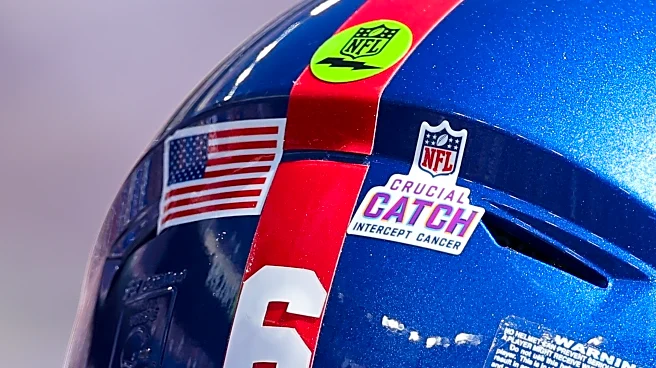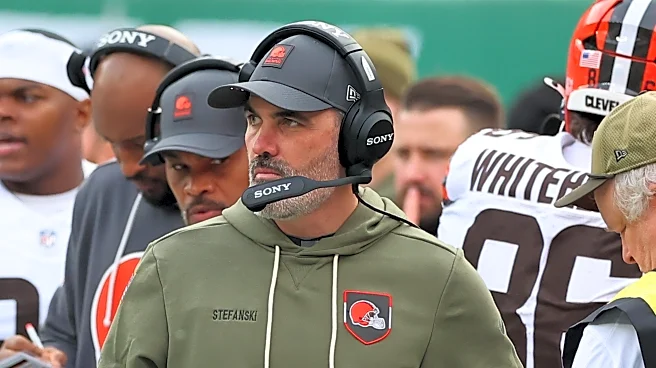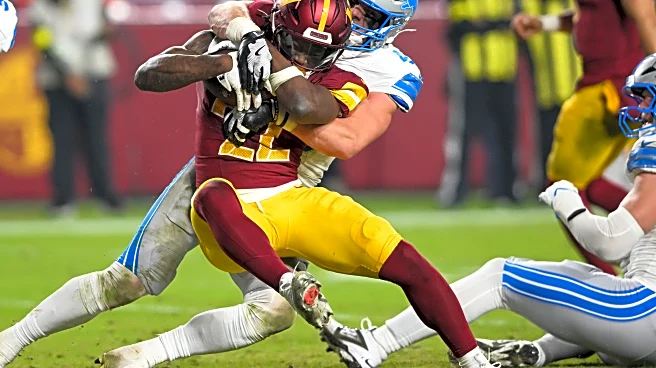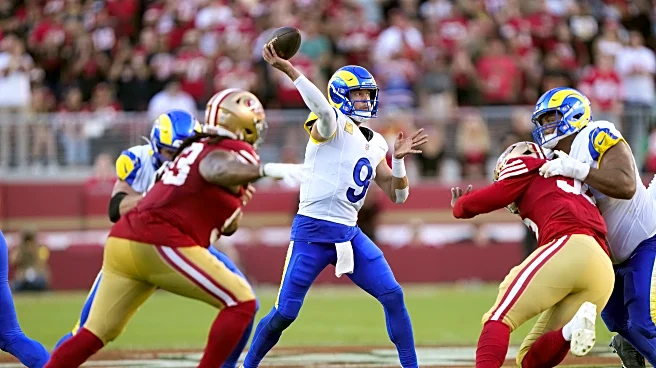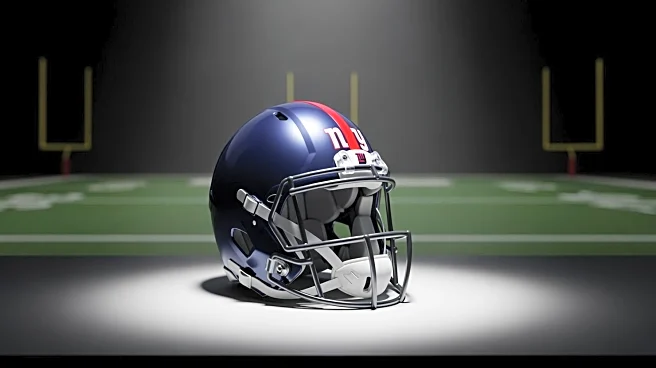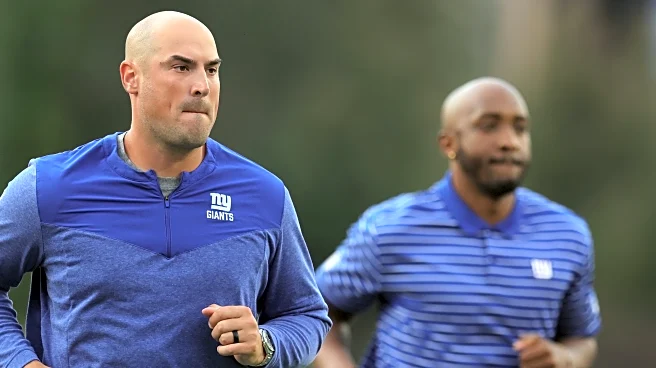What's Happening?
The NFL coaching carousel has seen significant movement, with the New York Giants recently firing head coach Brian Daboll after a series of disappointing performances. ESPN analyst Dan Orlovsky has proposed
Cleveland Browns head coach Kevin Stefanski as a potential candidate for the Giants' vacancy. Stefanski, a two-time Coach of the Year, is currently facing challenges with the Browns, who have struggled in recent seasons. Orlovsky believes Stefanski could be a good fit for the Giants, particularly in developing young quarterback Jaxson Dart and maximizing the potential of the team's roster. While Stefanski remains with the Browns, his future is uncertain, and the Giants may be monitoring his situation closely.
Why It's Important?
The potential move of Kevin Stefanski to the New York Giants could have significant implications for both teams. For the Giants, hiring Stefanski could bring a fresh perspective and potentially improve their performance, especially in developing their young talent. Stefanski's track record suggests he could help elevate the team's offensive capabilities. For the Browns, losing Stefanski might lead to further instability, as they have struggled to find consistent success in recent years. The decision could impact the dynamics of the NFL coaching landscape, influencing other teams' strategies and decisions regarding their coaching staff.
What's Next?
If the Giants decide to pursue Kevin Stefanski, it could lead to negotiations between the two teams and potentially a coaching change for the Browns. The Giants will likely continue evaluating candidates to fill their head coach position, considering the impact on their roster and future performance. Meanwhile, the Browns must assess their coaching situation and determine whether to retain Stefanski or explore other options. The outcome could affect player morale and team dynamics, influencing the direction of both franchises in the upcoming NFL season.
Beyond the Headlines
The potential coaching change highlights the broader challenges faced by NFL teams in maintaining competitive performance and managing coaching staff effectively. It underscores the importance of strategic leadership in sports and the impact of coaching decisions on team success. The situation also reflects the pressure on coaches to deliver results and the scrutiny they face from analysts and fans alike. As teams navigate these dynamics, the role of coaching in shaping team culture and performance remains a critical aspect of professional sports.


